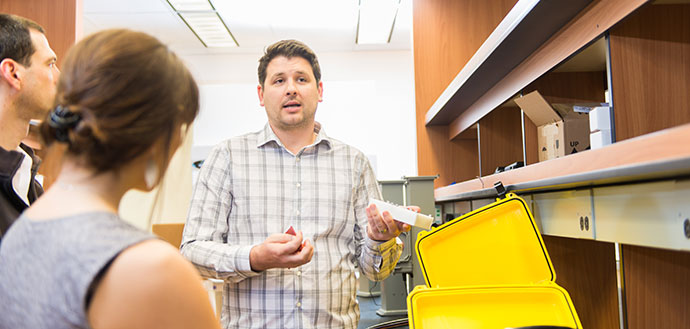
College of Public Health and Human Sciences Assistant Professor Perry Hystad is an environmental epidemiologist. His current research focuses on outdoor and household air pollution and cardiopulmonary health impacts. He is also examining co-benefits between air pollution and climate change reductions.
What is the current air quality in Corvallis?
Perry: “We have four monitors set-up in Corvallis where current readings can be found. There is also a DEQ monitor in South Corvallis. Concentrations of fine particulate matter less than 2.5 microns – which are small enough to reach the deep portions of your lungs when breathed in – have exceeded 200 µg/m3 in Corvallis over the last week.
“These levels are on par to concentrations seen in some of the most polluted cities in the world, like Beijing and New Delhi. Levels are now decreasing but remain over the 24-hour maximum health limit of 35 µg/m3.”
What are the health impacts of poor air quality on health?
Perry: “Individuals with existing respiratory or cardiovascular conditions, as well as the elderly and the very young, are most susceptible to the types of short-term elevations in air pollution we are experiencing. Generally, healthy individuals will not experience health effects from these high concentrations, although they can be irritating.”
What steps can people can take to lessen those impacts?
Perry: “The primary way to avoid exposure is to stay indoors, close windows and use an air conditioner if available. It is also important to avoid strenuous outdoor activity.
“You may be tempted to wear a surgical mask, but these are actually ineffective at filtering fine particles. Other types of masks, such as N-95 masks – meaning they block at least 95 percent of small particles – can be effective but it depends on the fit of the mask. If you work outside this is an option to reduce exposures.”
Is there is any recent research that is directly related?
Perry: “Different types of studies have examined the potential health impacts from wildfire smoke. Epidemiological studies have examined the impact of exposure to wildfire smoke and short-term health impacts.
“Other studies have used controlled experiments and chamber studies to exposure people have to wildfire smoke and measured short term markers, such as increases in inflammation and oxidative stress. Other studies have examined the health impacts from cooking with wood – which is still done by up to 3 billion individuals around the world – and the development of disease. We are currently conducting one of these studies in a global study of air pollution and cardiopulmonary disease.”
Are there differences in the types of hazards in the air from wildfires versus other types of pollution?
Perry: “The composition of particles from wildfires compared to other types of pollution, like industrial or vehicle emissions, is different but equally hazardous. The major difference is that smoke from wildfires is typically a short-term event whereas long-term exposure to these other sources of air pollution occurs daily.”
“This is why we are most concerned with wildfire smoke being a trigger for health events in susceptible populations who already have a pre-existing condition, such as asthma or heart disease.”